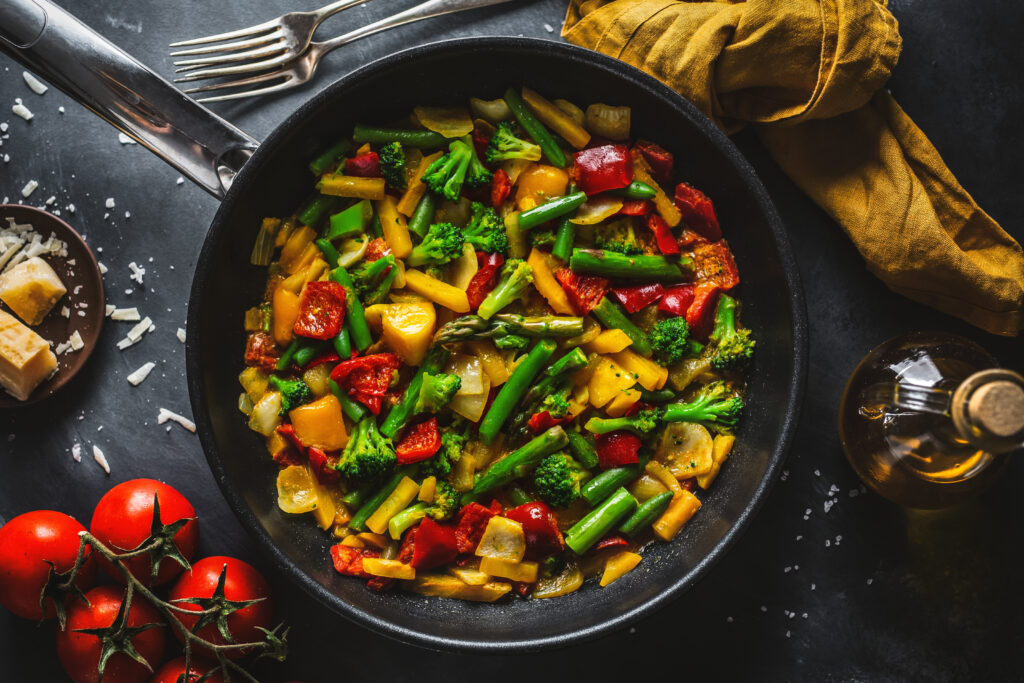When it comes to our daily meals, it’s important to ensure that we are getting a balanced and nutritious diet. This is especially true for our lunch, which is often the mid-day fuel that keeps us going until dinner. One way to achieve a well-rounded lunch is by creating a Power Plate, a concept developed by the Physicians Committee for Responsible Medicine (PCRM). The Power Plate is a simple and effective way to ensure that your lunch is packed with all the necessary nutrients for optimal health and energy.
The Power Plate is divided into four sections: fruits, vegetables, grains, and legumes. Each section represents a different food group and provides essential nutrients that our bodies need. By incorporating all four sections into your lunch, you can create a balanced and nutritious meal that will keep you satisfied and energized throughout the day.
Let’s take a closer look at each section of the Power Plate and how you can incorporate them into your lunch. First up, we have fruits. Fruits are an excellent source of vitamins, minerals, and fiber. They are also low in calories and high in antioxidants, making them a great addition to any meal. Some examples of fruits that you can include in your Power Plate lunch are apples, bananas, berries, and oranges. You can have them as a side dish or add them to your main dish, such as a fruit salad or a smoothie.
Next, we have vegetables. Vegetables are packed with essential nutrients, including vitamins, minerals, and fiber. They are also low in calories and can help prevent chronic diseases. Some examples of vegetables that you can include in your Power Plate lunch are leafy greens, carrots, bell peppers, and broccoli. You can have them raw as a salad or cooked as a side dish or soup.
Moving on to grains, they are an important source of carbohydrates, which are our body’s main source of energy. Whole grains, in particular, are rich in fiber, vitamins, and minerals. Some examples of whole grains that you can include in your Power Plate lunch are brown rice, quinoa, whole wheat bread, and oats. You can have them as a side dish or use them as a base for your main dish, such as a grain bowl or a wrap.
Last but not least, we have legumes. Legumes are a great source of plant-based protein, fiber, and essential nutrients. They are also low in fat and can help lower cholesterol levels. Some examples of legumes that you can include in your Power Plate lunch are beans, lentils, chickpeas, and tofu. You can have them as a side dish or use them as a protein source in your main dish, such as a bean salad or a tofu stir-fry.
Now that we have covered all four sections of the Power Plate, let’s see how we can put them together to create a balanced and nutritious lunch. Start by choosing one or two items from each section and combine them to create a well-rounded meal. For example, you can have a salad with leafy greens, carrots, beans, and quinoa. Or you can have a grain bowl with brown rice, roasted vegetables, and tofu. The possibilities are endless, and you can mix and match different ingredients to create a lunch that suits your taste and dietary needs.
In addition to providing a balanced and nutritious meal, the Power Plate also offers a variety of health benefits. By incorporating fruits and vegetables into your lunch, you can boost your immune system and reduce the risk of chronic diseases. Whole grains and legumes can help regulate blood sugar levels and improve heart health. And by including a variety of foods in your lunch, you can prevent boredom and ensure that you are getting all the necessary nutrients for optimal health.
The Power Plate is a simple and effective way to create a balanced and nutritious lunch. By incorporating fruits, vegetables, grains, and legumes into your meal, you can ensure that you are getting all the essential nutrients for optimal health and energy. So next time you’re planning your lunch, remember the Power Plate and create a meal that will nourish your body and keep you going strong until dinner.







